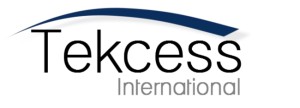Once you have segmented your market and selected the target segment(s) for your product strategy, it’s time to describe your target customer as precisely as possible. When you segmented your overall market, you likely used common segmentation variables like
- Industry,
- Organization type,
- Equipment application,
- Buying organization’s size,
- Buying organization’s product or service
- Geography, and
- Equipment purchase rate.
The market segment definition developed using these variables is perfect for
- Identifying the individual buyers within each segment,
- Defining common buying behaviors that are different from all other segments,
- Measuring the opportunity represented by each segment, and
- Choosing target segments for your product and marketing strategy.
However, a segmentation-level target market description is insufficient to drive your product and marketing strategies. You need to know much more to ensure commercially successful products. As a final step in defining and selecting market segments, you must define your target customer as precisely as possible. Include in your target customer definition the answers to questions like these:
- What types of organizations are in your target market?
- What groups in these organizations will buy from you?
- What job titles do buyers typically hold?
- Who are your customers’ customers? (internal/external)
- What are your customers’ customers demanding of them?
- Where are your target customers located?
- Where do they sit in the value chain?
- What problems do they have that you intend to solve?
- How does solving these problems make or save them money?
- How are these problems evolving?
- What triggers the need to buy?
- How do they make their buying decisions?
- What are their alternatives to buying?
- What are their consequences of not buying?
- What else do these customers have in common that distinguishes them from all other possible customers?
Try this little exercise to test the precision of your target market description. Imagine that one thousand people are in the next room. Of the one thousand people, only five are in your target market. Next to you is a stranger. If you handed that stranger your target customer description, could he go in that room and accurately identify the five customers that belong in your target market?
Once you’re confident that he can, you’ve succeeded in defining your target customer.

